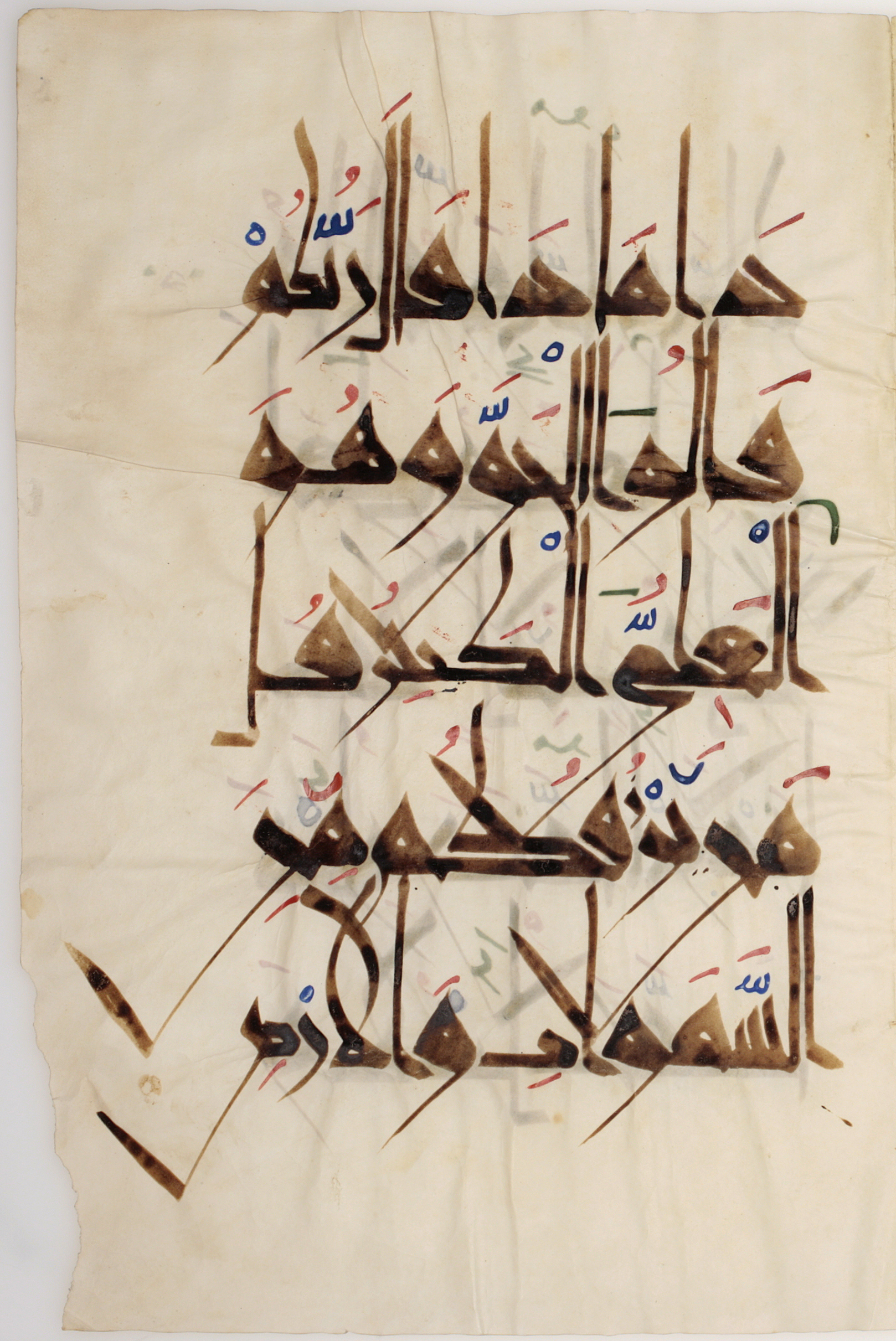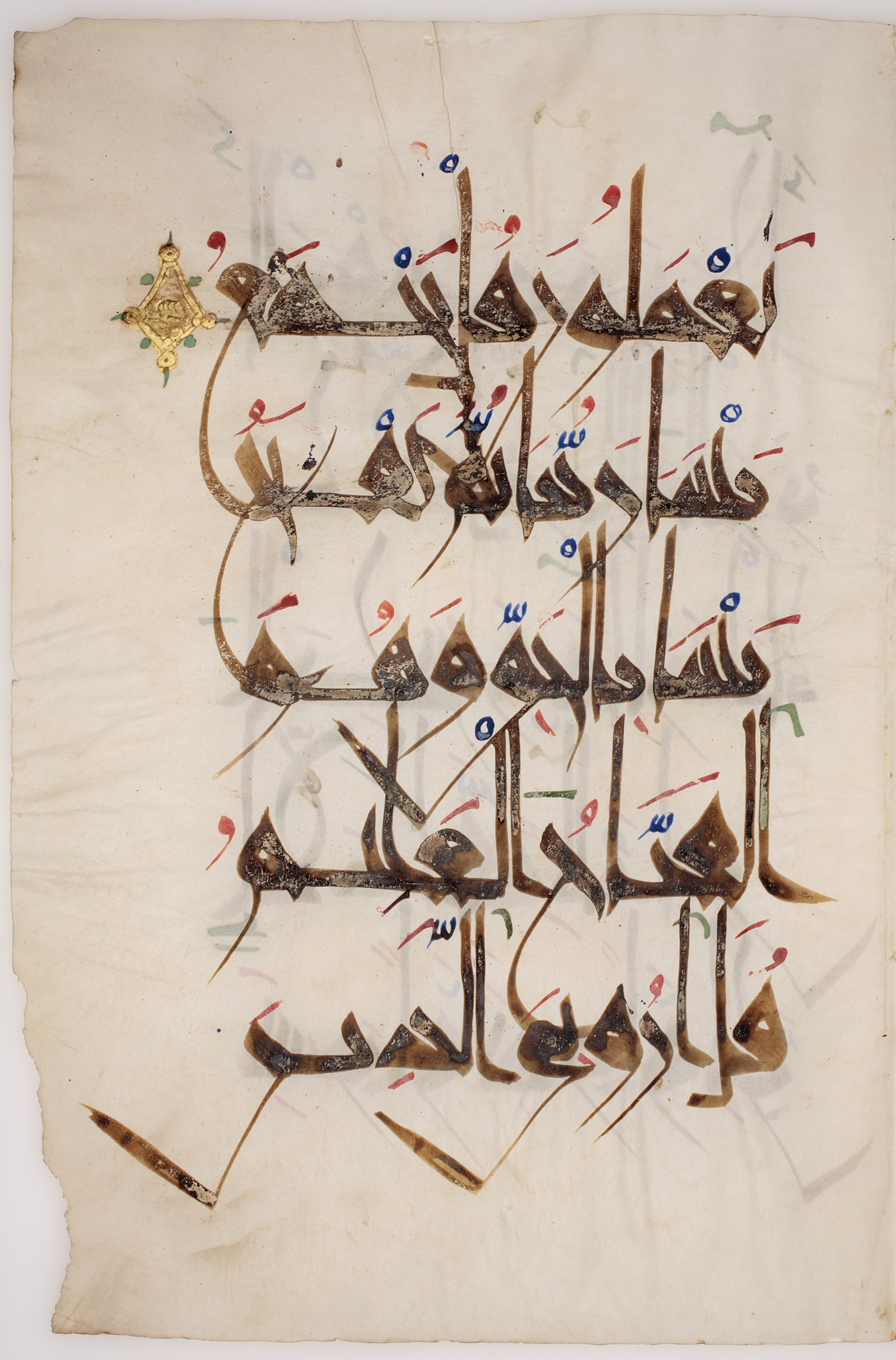 Print Page
Print Page
 Print Page
Print Page
Location: North Africa
Materials: ink, gold and opaque watercolour on vellum
Dimensions: 45 x 30cm
Accession Number: KFQ 94
Other Notes:
Text: surah Saba’ (XXIV), verses 22–8, in part.
These pages are from one of the grandest Qur’ans to survive from the Muslim Middle Ages. The script is similar to that of a famous Qur’an known as the Mushaf al-Hadinah, commissioned by the former nurse of the ruler of Tunisia, Mu‘izz ibn Badis in 410 AH (1019–20 AD) and written, probably at Kairouan, in the workshop of the calligrapher ‘Ali ibn Ahmad al-Warraq.
The ascenders here are tall and without serifs, and some of the letter terminations are exaggeratedly angular, producing a satisfying balance of forms, both vertically and horizontally. Like ‘Ali ibn Ahmad al-Warraq, the scribe of the present bifolio may well have received his training in Baghdad, for the letter forms seem to originate in Qur’ans of similar date from Mesopotamia and Iran.
Script:
copied in Kufic script; 5 lines to the page
Bibliography:
J.M. Rogers, The Arts of Islam. Masterpieces from the Khalili Collection, London 2010, cat.55, pp.66–7.

